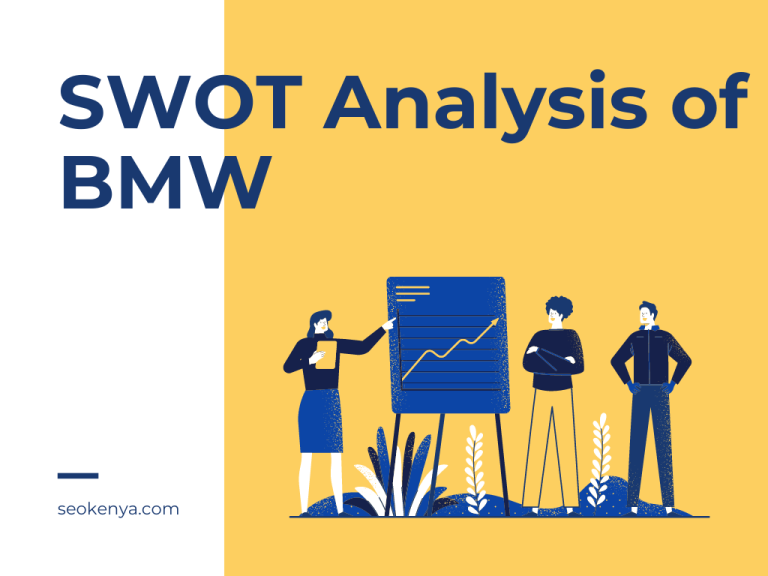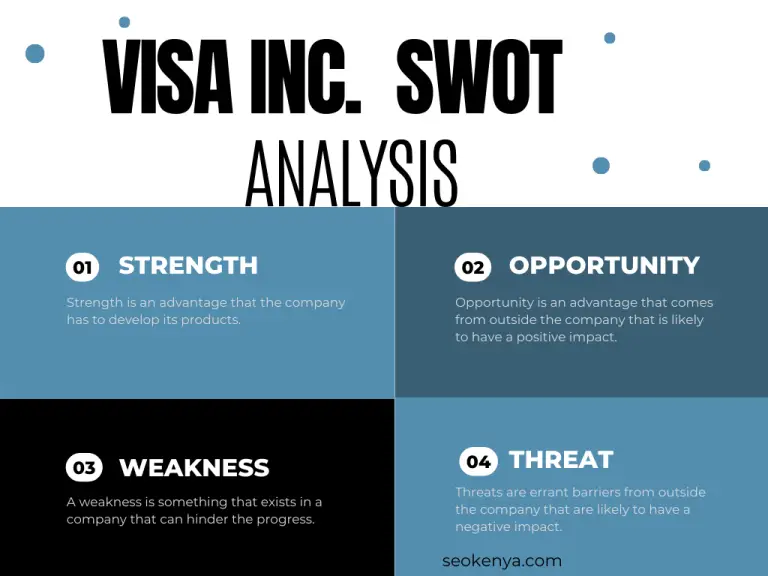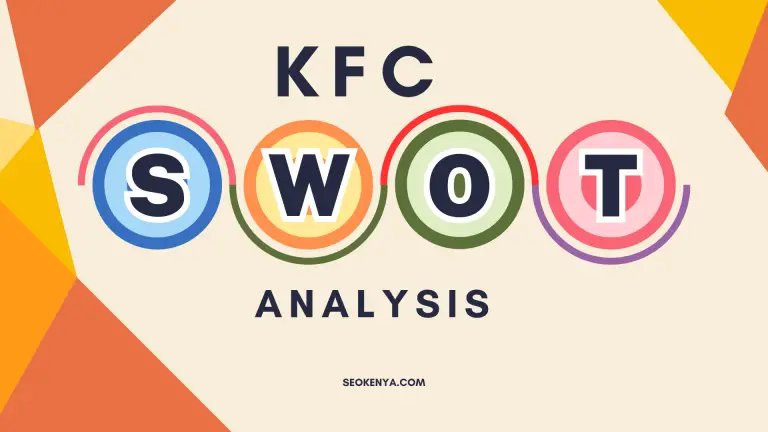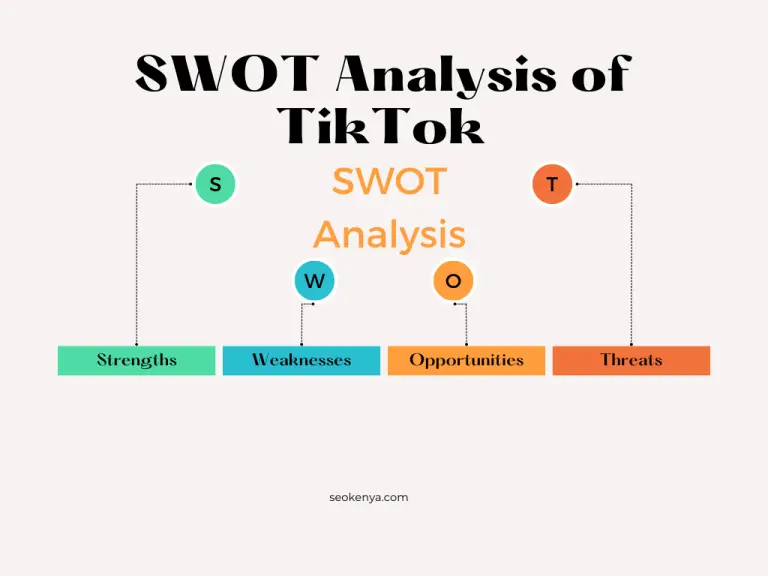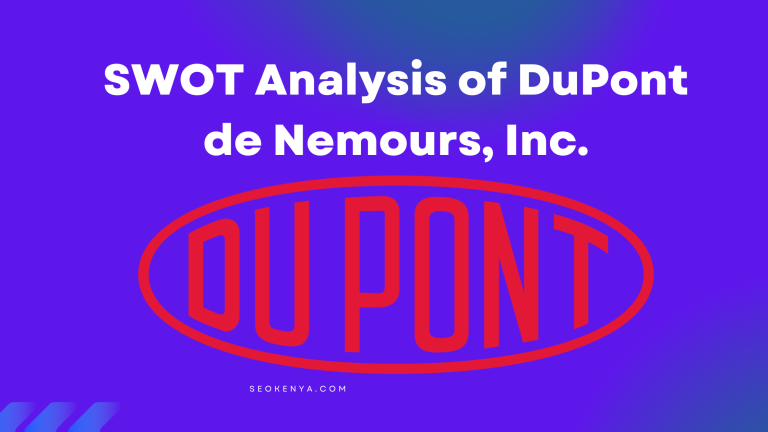Tesco SWOT Analysis 2023: An In-Depth Study
Tesco is a multinational retail corporation that operates in multiple countries, including the UK, Europe, and Asia.
It is considered as one of the largest grocery retailers in the world and operates through its core businesses, including Tesco Superstores, Tesco Express, Tesco Metro, and Tesco Extra.
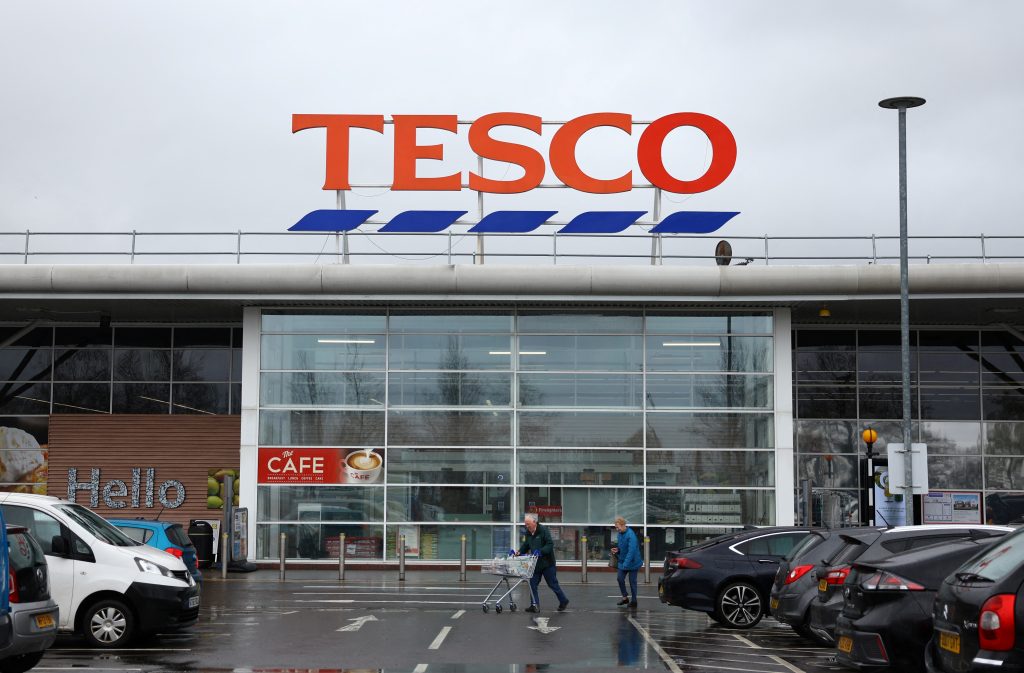
Tesco Company Profile Overview
Here’s an overview of Tesco in a table format:
| Category | Details |
| Company Name | Tesco PLC |
| Founded | 1919 |
| Founders | Jack Cohen |
| Headquarters | Welwyn Garden City, Hertfordshire, England, UK |
| Industry | Retail (Supermarket chains) |
| Products | Groceries, general merchandise, clothing, financial services, telecommunication services |
| Number of Stores | Around 6,900 stores across the UK and internationally (as of 2022) |
| Key Executives | John Allan (Chairman), Ken Murphy (Group Chief Executive), Imran Nawaz (Chief Financial Officer) |
| Revenue | £61.3 billion (2022) |
| Net Income | £1.2 billion (2022) |
| Employees | Around 360,000 (as of 2022) |
| Website | www.tesco.com |
This article aims to provide a comprehensive SWOT analysis of Tesco in 2023 and help readers understand the company’s strengths, weaknesses, opportunities, and threats.
The purpose of this analysis is to provide a comprehensive overview of the company’s current state and its potential for growth in the future.
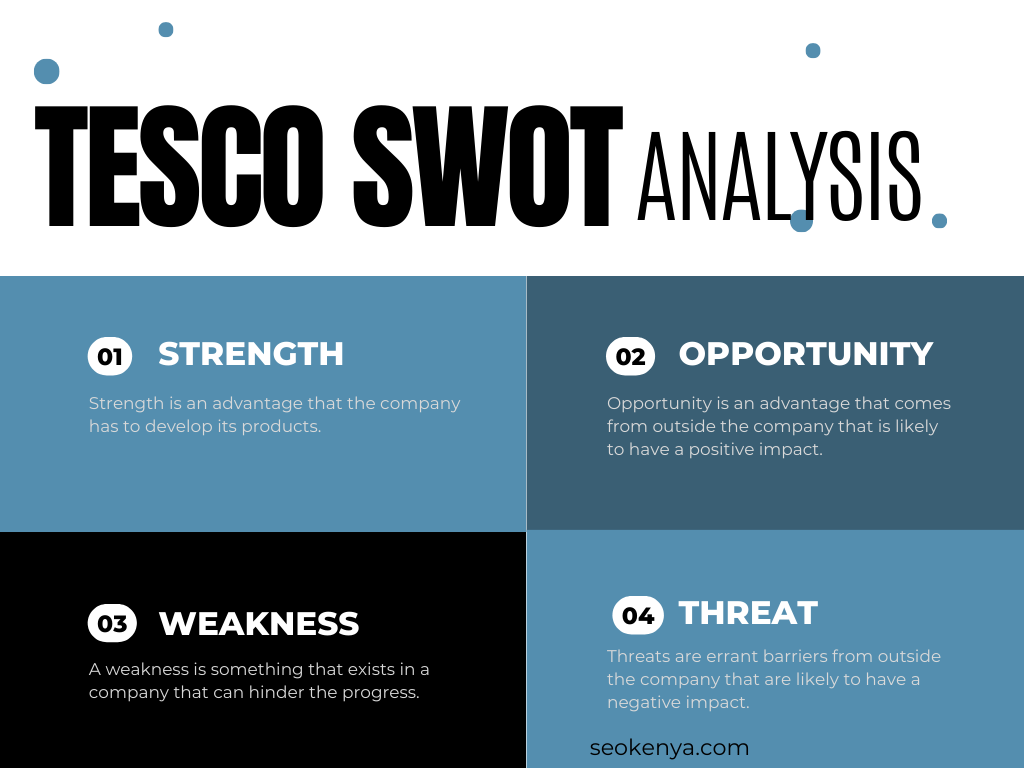
Strengths of Tesco
Strong Brand Image: Tesco has built a strong brand image over the years and is known for providing high-quality products and services to its customers. This has helped the company establish a loyal customer base and maintain its position as one of the largest grocery retailers in the world.
Wide Range of Products and Services: Tesco offers a wide range of products and services to its customers, including food, clothing, electronics, and financial services. This makes the company a one-stop-shop for its customers and provides them with convenience and choice.
Extensive Supply Chain Network: Tesco has a well-established and extensive supply chain network that helps it to source products from multiple countries and ensure timely delivery to its stores. This has helped the company maintain its competitiveness and meet the demands of its customers.
Strong Financial Position: Tesco has a strong financial position and has consistently reported positive financial results in the past. This has provided the company with the resources to invest in its operations, expand its business, and enhance its competitiveness.
Diversified Business Portfolio: Tesco operates in multiple countries, providing a diverse range of products and services. This diversification helps the company to mitigate risks and ensure stability, even in times of economic uncertainty.
Convenient shopping experience: Tesco has invested heavily in its online and in-store shopping experiences, making it easy for customers to shop for what they need.
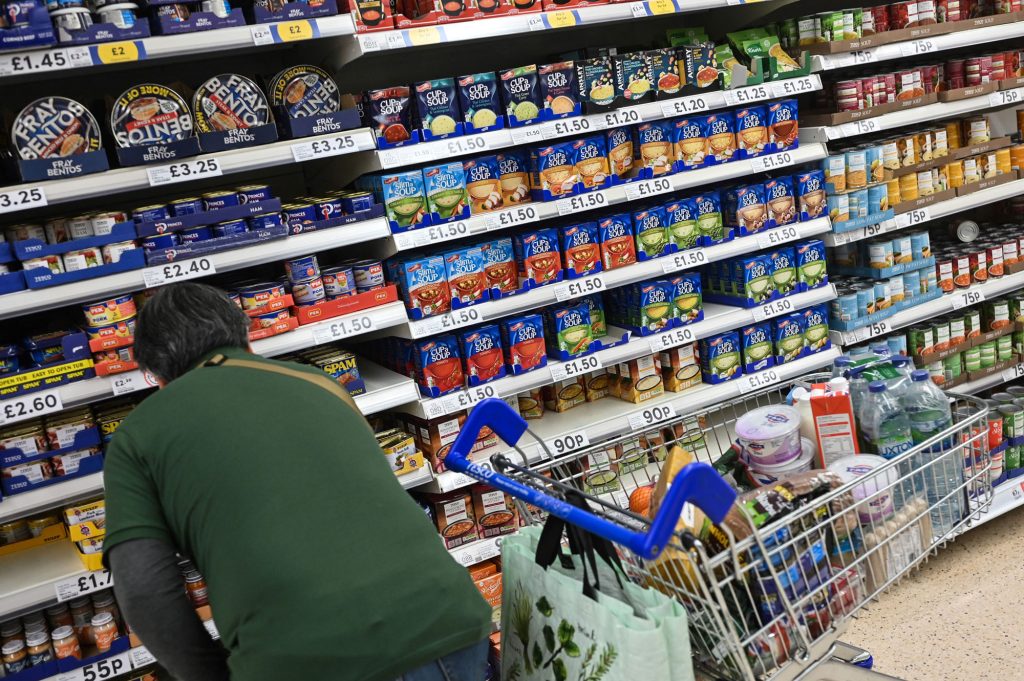
Weaknesses of Tesco
Dependence on UK Market: Tesco is heavily dependent on its operations in the UK and is vulnerable to changes in the market conditions. This has made the company susceptible to economic and political fluctuations in the region and may impact its financial performance.
Competition from Discount Retailers: Tesco faces intense competition from discount retailers such as Aldi and Lidl, who offer similar products at lower prices. This competition puts pressure on Tesco to keep prices low, which may negatively impact its profit margins.
Supply Chain Challenges: Tesco’s supply chain is complex and extensive, with suppliers located in multiple countries. This complexity can lead to supply chain disruptions, which can negatively impact the company’s operations and reputation.
Decreasing Consumer Confidence: Consumer confidence in the UK has been declining in recent years, which may negatively impact Tesco’s sales and profitability.
Challenges in the online retail space: Tesco faces challenges in the online retail space, as consumers are increasingly turning to e-commerce platforms for their shopping needs.
Limited international presence: While Tesco has a strong presence in multiple countries, it is not present in every market around the world.
Opportunities of Tesco
Expansion into Emerging Markets: Tesco has the opportunity to expand into emerging markets, where there is significant growth potential. These markets offer new customers and untapped revenue streams for the company.
Growth of Online Retail: The growth of online retail presents an opportunity for Tesco to increase its online sales and reach a wider customer base. Tesco has already invested in its online operations, positioning itself for future growth in this area.
Increased Focus on Sustainability: There is a growing trend towards sustainability and environmentally-friendly products. Tesco has the opportunity to capitalize on this trend by offering eco-friendly products and promoting its sustainability initiatives.
Development of New Products and Services: Tesco has the opportunity to develop new products and services, such as financial services and home insurance, to further diversify its business portfolio.
Growth in e-commerce: Tesco has the opportunity to capitalize on the growing trend towards online shopping by investing in its online platform and offering a convenient shopping experience to customers.
Acquisition of complementary businesses: Tesco has the opportunity to acquire complementary businesses to strengthen its product and service offerings.
Threats of Tesco
Economic Uncertainty: The global economy is facing significant uncertainty, which may negatively impact Tesco’s sales and profitability. Economic instability in any of the countries where Tesco operates can lead to a decline in consumer spending, which would negatively impact the company.
Increasing Cost of Goods: The cost of goods is increasing globally, due to factors such as rising commodity prices and currency fluctuations.
Economic Instability: Economic instability in the markets where Tesco operates can impact the company’s revenue and growth potential.
Changes in Consumer Trends: Changes in consumer trends, such as the shift towards healthier and sustainable products, can impact Tesco’s product offerings and revenue.
Increased Regulation: Increased regulation in the retail industry can impact Tesco’s operations and profitability.
Supply Chain Challenges: Tesco relies heavily on its supply chain to ensure the availability of products for its customers. Supply chain disruptions can impact the company’s ability to meet customer demand and reduce revenue.
Economic downturns: Economic downturns can have a negative impact on consumer spending and the overall retail sector, which could negatively impact Tesco’s performance.
The increasing cost of operations: The cost of operating a retail business continues to rise, and Tesco will need to find ways to mitigate these costs in order to remain competitive.
Conclusion
Tesco is a well-established and successful retailer with a strong brand, wide product range, and convenient shopping experience. However, it faces challenges in the form of competition from discount retailers and the growing trend toward online shopping.
In order to remain competitive and continue to grow, Tesco will need to focus on expanding into new markets, developing new products and services, and finding ways to mitigate rising operating costs.
